The Star Magnolia Bonsai is a breathtaking sight with its delicate features that add charm to any bonsai collection. The tree boasts slender twigs, small leaves, and magnificent flowers that captivate onlookers. The narrow, dark green leaves create a lush canopy, turning vibrant yellow in the fall before gracefully shedding. The smooth, light grey bark adds a touch of elegance to the overall appearance of the bonsai.
Appearance of Star Magnolia Bonsai
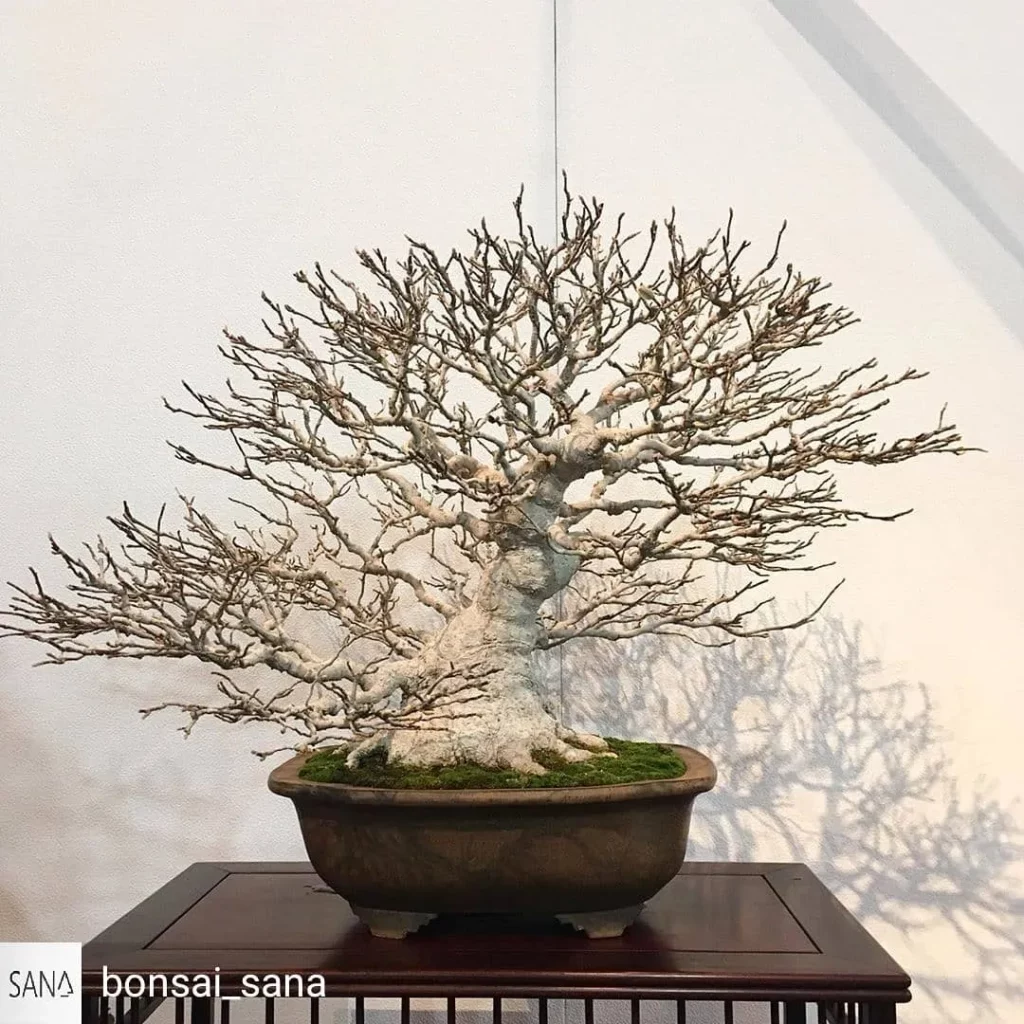
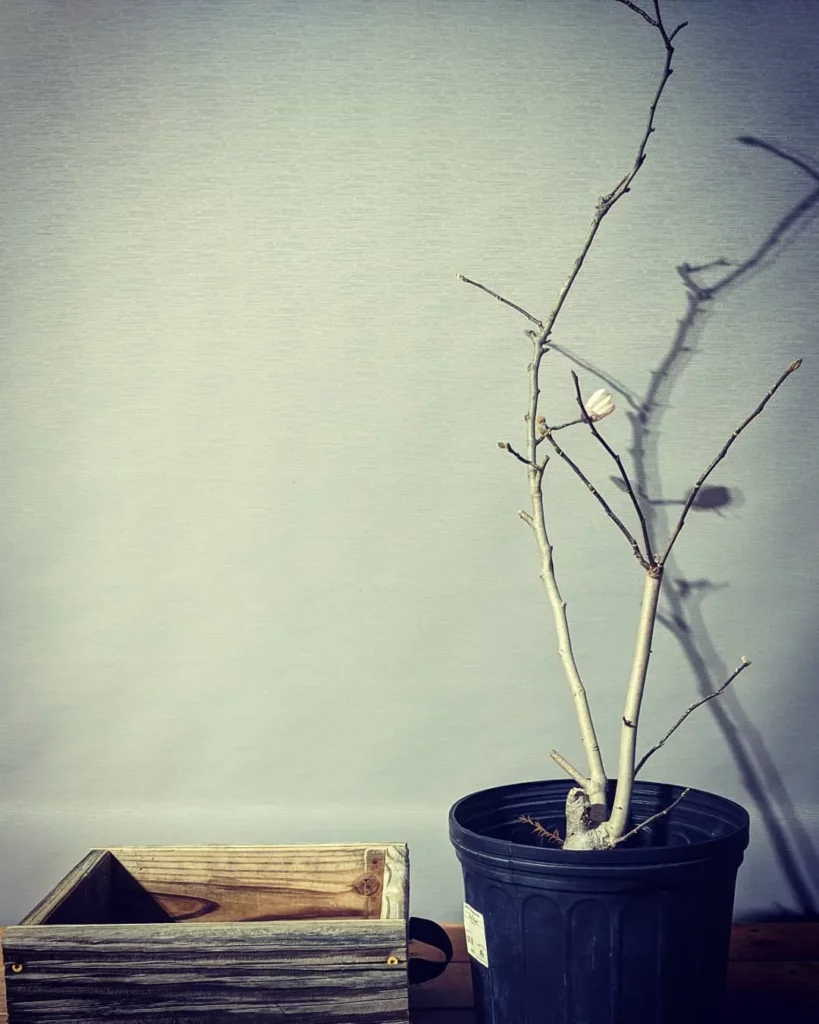
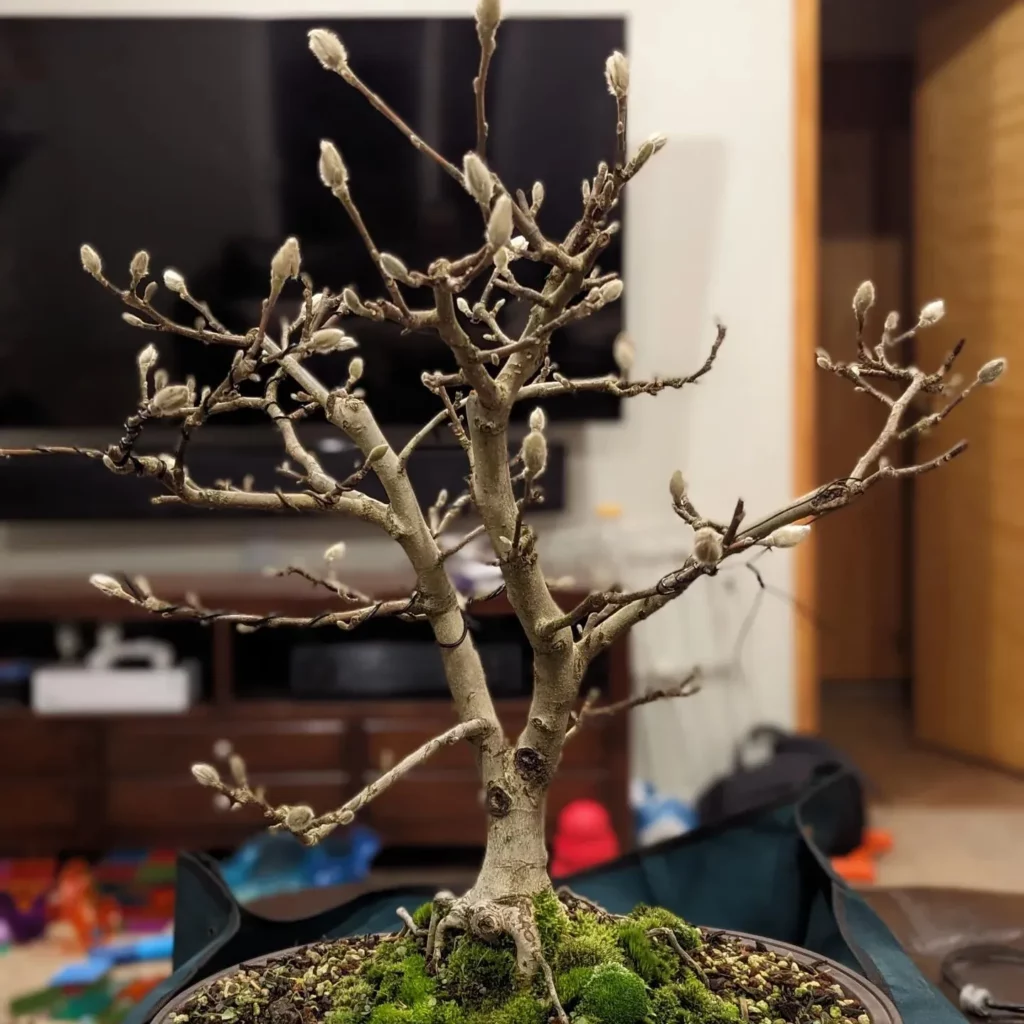
What truly sets the Star Magnolia Bonsai apart are its enchanting flowers. In early spring, it produces scented blooms that enchant the senses. These flowers bear long and narrow white petals, with a greenish pistil and yellow stamina at the center. Additionally, there is a cultivar of the Star Magnolia Bonsai that showcases delicate pinkish flowers, further adding to its allure.
While the flowers may seem large in proportion to smaller bonsai trees, the Star Magnolia Bonsai is commonly selected for medium and small-sized bonsai, highlighting its versatility and aesthetic appeal.
Light Requirements for Star Magnolia Bonsai
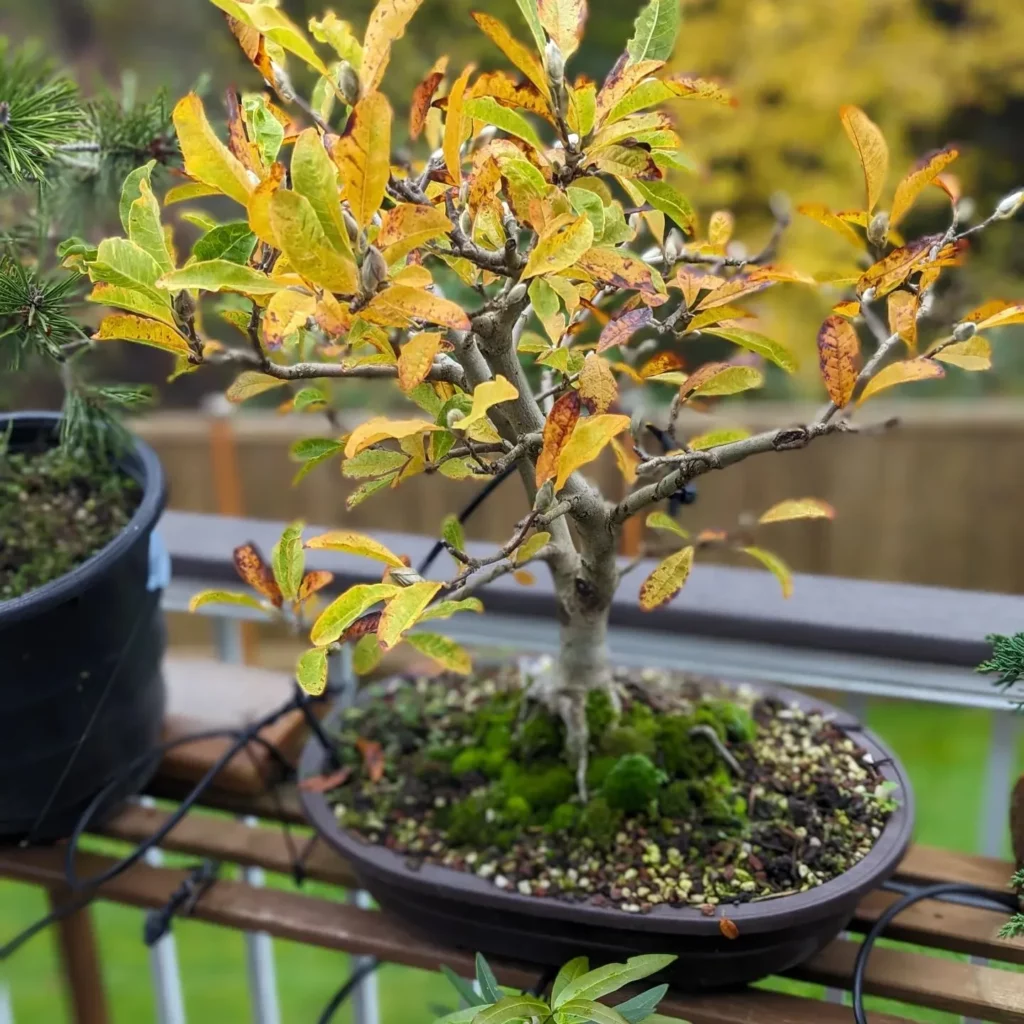
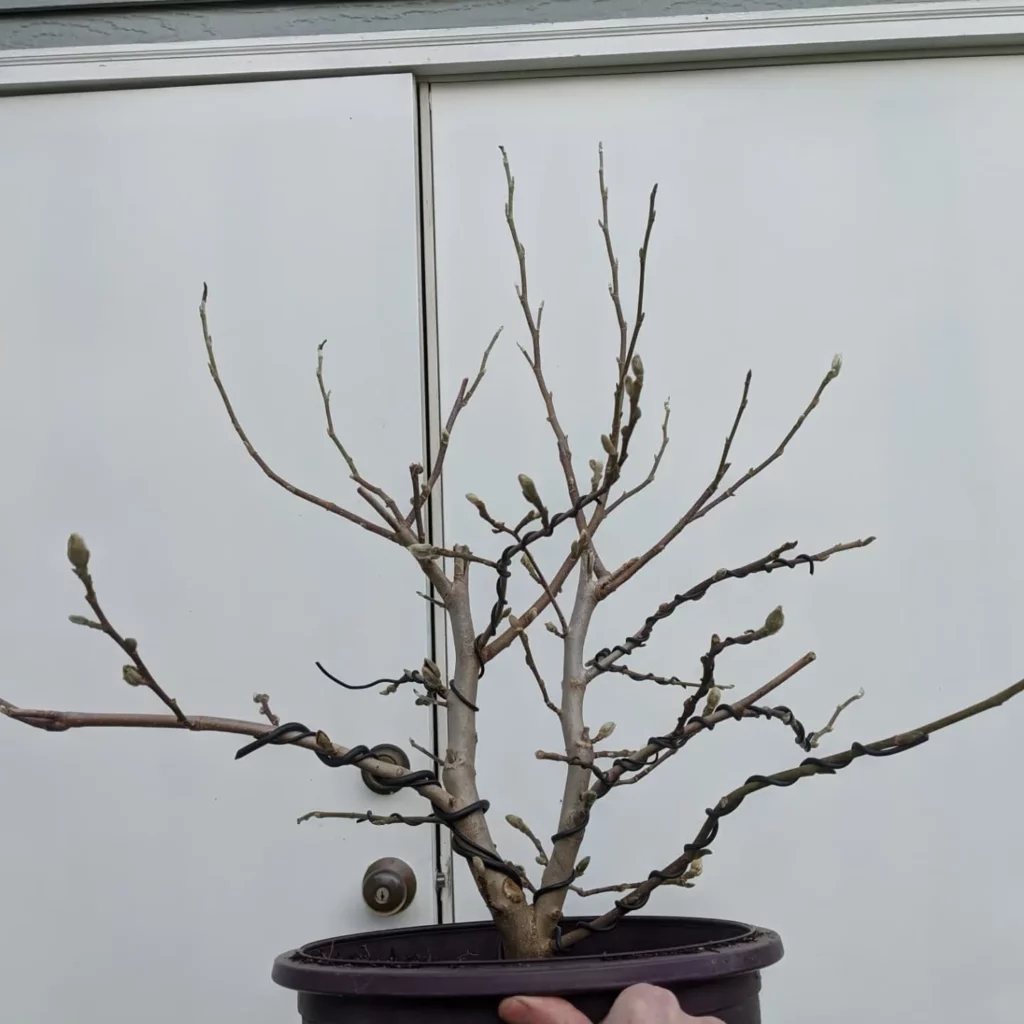
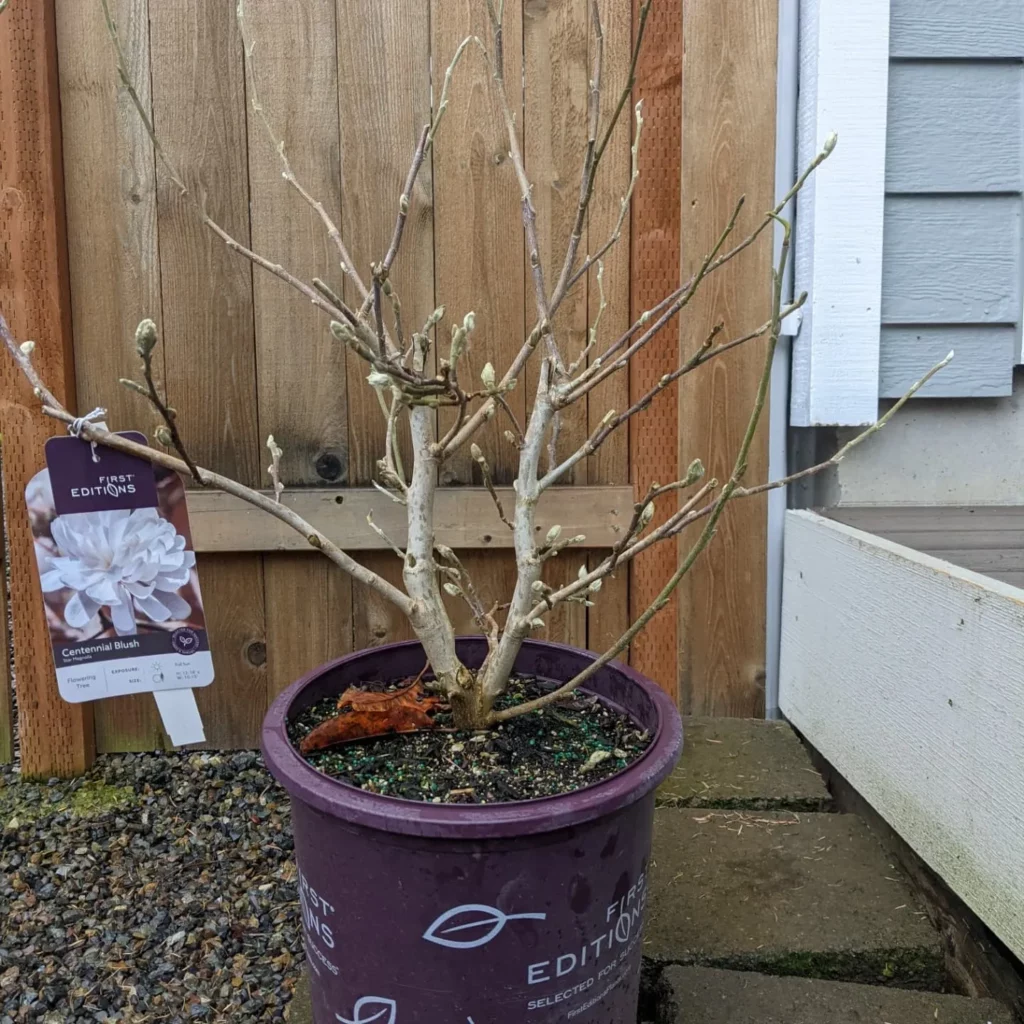
To ensure the optimal growth and health of your Star Magnolia Bonsai, it is essential to provide it with the right amount of light. Here are some light requirements to keep in mind:
- Full Sun to Semi-Shade: Star Magnolia Bonsai thrives in areas that receive full sun to partial shade. Find a location that offers a balance of sunlight and shade throughout the day.
- Protection from Frost: While Star Magnolia Bonsai can tolerate frost, it is important to protect it from strong frost, especially if it is planted in small bonsai containers. Consider placing the bonsai tree in a cold but frost-free greenhouse during the winter months.
Watering Star Magnolia Bonsai
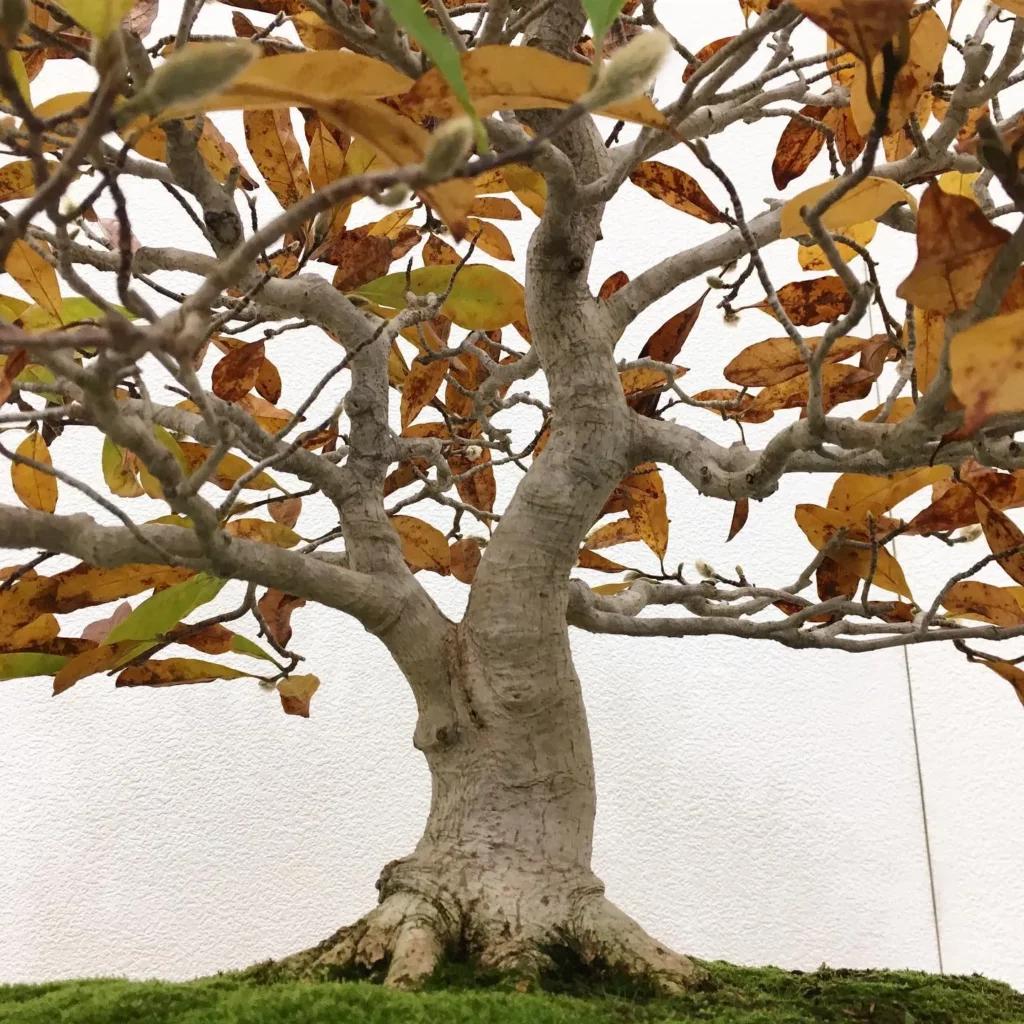
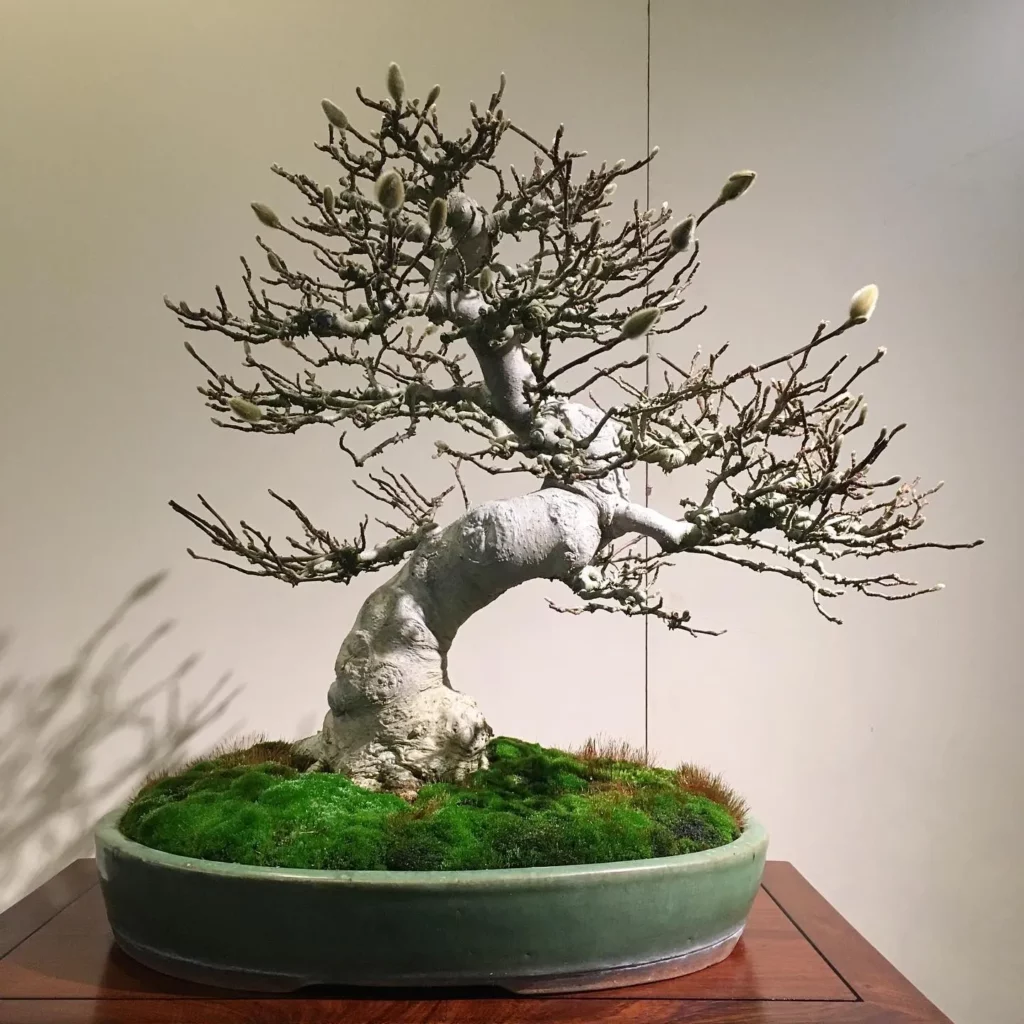
Proper watering is essential for maintaining the health and vitality of your Star Magnolia Bonsai. To ensure optimal growth, it is important to keep the rootball consistently moist, but be cautious not to overwater and cause waterlogging. During the growing season, your bonsai tree will require a significant amount of water, so it is crucial to regularly check the soil moisture and avoid letting it dry out.
The Star Magnolia Bonsai prefers slightly acidic or neutral water with a pH value ranging between 5.5 and 7. If the tap water in your area is highly calcareous, it is recommended to use rainwater for watering your bonsai. This will help prevent the buildup of mineral deposits and maintain the ideal pH level for your tree’s overall health.
Here are some watering tips to keep in mind when caring for your Star Magnolia Bonsai:
- Check the soil moisture regularly by inserting your finger about an inch deep into the soil. If it feels dry at that depth, it’s time to water your bonsai.
- Water thoroughly until you see water coming out of the drainage holes at the bottom of the pot. This ensures that the entire rootball is adequately moistened.
- Allow the excess water to drain out completely before placing the bonsai back in its designated spot.
- Avoid watering during the hottest part of the day to prevent water evaporation and potential leaf scorching.
- Adjust your watering frequency based on the season and environmental conditions. During hotter and drier periods, you may need to water more frequently, while in cooler and more humid conditions, you can reduce the watering frequency.
Fertilizing Star Magnolia Bonsai
Proper fertilizing is essential for the health and vitality of your Star Magnolia Bonsai. Regular fertilization provides the necessary nutrients for optimal growth and development. Here’s what you need to know:
1. Frequency:
Fertilize your Star Magnolia Bonsai once a month to ensure a steady supply of nutrients throughout the growing season.
2. Types of Fertilizer:
You can choose between solid organic fertilizer or liquid fertilizer. Both options are effective in providing the necessary nutrients to support healthy growth.
3. Balanced Fertilizer:
When selecting a fertilizer, opt for a balanced formula with equal amounts of nitrogen, phosphorus, and potassium. This balanced ratio promotes overall plant health and encourages robust growth.
4. Application:
Follow the instructions provided on the fertilizer packaging for the correct dosage and application method. It’s important not to over-fertilize, as this can harm the bonsai tree.
5. Timing:
Apply the fertilizer during the active growing season, typically from spring to early autumn. This ensures that the nutrients are readily available when the Star Magnolia Bonsai needs them the most.
6. Watering after Fertilizing:
After fertilizing, make sure to water the bonsai thoroughly. This helps to distribute the nutrients evenly and prevents any potential damage caused by concentration.
Potting Star Magnolia Bonsai
Proper potting is essential for the health and vitality of your Star Magnolia Bonsai. Younger trees should be repotted every two to three years, while older specimens require less frequent repotting. Repotting helps promote healthy root growth and prevents the tree from becoming pot-bound. Here are some key points to keep in mind:
- Choose a standard soil mixture with a pH value between 5.5 and 7. This will provide the optimal environment for the roots to thrive.
- When repotting, handle the roots with care as they are fragile. Pruning should be done lightly, especially for older bonsai trees, to avoid any damage or stress.
- Ensure the new pot has proper drainage holes at the bottom to prevent waterlogging, which can lead to root rot.
- Place a layer of soil at the bottom of the new pot, and carefully position the bonsai tree in the center.
- Fill the remaining space with the soil mixture, gently pressing it down to secure the tree in place.
- Water the newly repotted bonsai thoroughly, allowing the water to drain out completely.
Propagation of Star Magnolia Bonsai
Star Magnolia Bonsai can be propagated in a few different ways to expand your collection or share the beauty with others. From seeds to cuttings and air-layering, each propagation method has its own requirements and techniques to ensure success.
1. Propagation from Seeds
If you choose to propagate Star Magnolia Bonsai from seeds, it is best done in the spring when the temperatures start to warm up. Here are the steps:
- Collect mature seeds from the Star Magnolia flowers.
- Prepare a growing tray or pots with a well-draining soil mixture.
- Sow the seeds on the soil surface, pressing them gently into the soil.
- Keep the soil consistently moist and place the tray or pots in a warm and sunny location.
- Germination can take anywhere from a few weeks to a few months. Be patient and monitor the growth.
- Once the seedlings have developed a few pairs of true leaves, they can be transplanted into individual pots.
2. Propagation from Cuttings
Propagating Star Magnolia Bonsai from cuttings can be done in the summer when the tree is actively growing. Follow these steps:
- Select a healthy and vigorous branch for cutting.
- Make a clean cut just below a leaf node, using sharp and sterile pruning shears.
- Remove the lower leaves, leaving only a few at the top.
- Prepare a pot with a well-draining soil mixture.
- Dip the cut end of the cutting in rooting hormone powder or gel.
- Insert the cutting into the pot, ensuring that it is securely planted in the soil.
- Place the pot in a warm and shaded area, away from direct sunlight.
- Mist the cutting regularly to maintain humidity.
- Rooting can take several weeks to a few months. Once roots have developed, you can transplant the cutting into a larger pot.
3. Air-Layering
Air-layering is another effective method to propagate Star Magnolia Bonsai. Here’s how it’s done:
- Select a healthy branch and make a small incision about halfway through the branch.
- Apply rooting hormone to the incision to promote root growth.
- Wrap moist sphagnum moss around the incision and secure it with plastic wrap or aluminum foil.
- Keep the moss moist during the rooting process.
- Roots should develop within a few months. Once sufficient roots have formed, cut below the air-layered site and plant the new tree in a pot.
Growth and Development of Star Magnolia Bonsai
The growth and development of your Star Magnolia Bonsai are influenced by several factors, including light, water, fertilizer, and pruning. By providing the right care and maintenance, you can help your bonsai tree achieve a desired branch structure and canopy density.
- Proper Pruning: Regular pruning during the tree’s winter dormancy is essential for shaping its form and maintaining overall health. This process helps control the growth direction of branches and encourages the development of a balanced and aesthetically pleasing shape.
- Light Requirements: Ensure your Star Magnolia Bonsai receives adequate sunlight during the day. This helps promote healthy growth and flowering. If you have limited access to natural light, consider using supplemental grow lights to ensure your bonsai gets the necessary light it needs.
- Watering: Proper watering is crucial for the growth and vitality of your Star Magnolia Bonsai. Keep the rootball moderately moist, avoiding both overwatering and allowing the soil to dry out completely. Finding the right balance is key to supporting healthy development.
- Optimal Fertilization: Regularly fertilize your Star Magnolia Bonsai using a balanced fertilizer. This provides essential nutrients for growth and development. Follow the recommended dosage and schedule to prevent over- or under-fertilization, which can negatively impact the tree’s health.
- Wire Monitoring: When wiring your bonsai, monitor the growth closely to prevent wires from cutting into the bark. As your Star Magnolia Bonsai develops, the branches thicken, and the wires can potentially cause damage if not adjusted or removed in a timely manner.
Pests and Diseases of Star Magnolia Bonsai
Star Magnolia Bonsai is a resilient plant that generally remains unaffected by pests and diseases. However, it is not entirely immune, and being aware of potential issues is crucial for maintaining the health and vitality of your bonsai tree.
Aphids and scale insects are the most common pests that can infest Star Magnolia Bonsai. These tiny creatures feed on the sap of the tree, causing leaf yellowing, stunted growth, and overall weakening. To control these pests, specific pesticides designed for aphids and scales can be used. Regular inspection of your bonsai tree helps in early detection and timely intervention.
Overwatering is a common mistake that bonsai enthusiasts make, and Star Magnolia Bonsai is no exception. Excessive moisture can lead to root rot and leaf drop, adversely affecting the health of the tree. It is essential to maintain a proper watering schedule and ensure that the rootball is moist but not waterlogged. Adequate drainage is vital to prevent water accumulation.
Another issue that may occur with Star Magnolia Bonsai is chlorosis, a condition characterized by yellowing leaves. This can result from frequent watering with highly calcareous water or a lack of proper fertilization. Using slightly acidic or neutral water with a pH between 5.5 and 7, and fertilizing the bonsai tree regularly with a balanced fertilizer, can help prevent chlorosis and provide the necessary nutrients for healthy growth.
FAQ
What is the appearance of Star Magnolia Bonsai?
The Star Magnolia Bonsai is characterized by its thin twigs, small leaves, and stunning flowers. The leaves are narrow and dark green, turning yellow in the autumn before shedding. The bark is light grey and smooth. The star magnolia produces scented flowers in early spring, with long and narrow white petals, a greenish pistil, and yellow stamina. There is also a cultivar with pinkish flowers.
What are the light requirements for Star Magnolia Bonsai?
Star Magnolia Bonsai prefers full sun to semi-shade conditions. It can tolerate frost but should be protected from strong frost, especially when planted in small bonsai containers. During the winter, it is recommended to place the bonsai tree in a cold but frost-free greenhouse. While the star magnolia can resist frost better than other magnolia species, it is still important to protect the flowers from rain and frost to prolong their lifespan.
How should I water Star Magnolia Bonsai?
Proper watering is crucial for the health of Star Magnolia Bonsai. The rootball should be kept moist but not waterlogged. During the growing season, the bonsai tree requires a significant amount of water, so it is essential not to let it dry out. The magnolia prefers slightly acidic or neutral water with a pH value between 5.5 and 7. If your tap water is highly calcareous, it is best to use rainwater for watering the bonsai.
How often should I fertilize Star Magnolia Bonsai?
Star Magnolia Bonsai should be fertilized once a month using either solid organic fertilizer or a liquid fertilizer. It is recommended to use a balanced fertilizer with equal amounts of nitrogen, phosphorus, and potassium. Fertilizing helps provide the necessary nutrients for optimal growth and development of the bonsai tree.
How should I pot Star Magnolia Bonsai?
Younger Star Magnolia Bonsai trees should be repotted every two to three years, while older specimens require less frequent repotting. It is important to use a standard soil mixture with a pH value between 5.5 and 7. The roots of the star magnolia are fragile, so pruning should be done lightly, especially for older bonsai trees. Repotting helps promote healthy root growth and prevents the tree from becoming pot-bound.
How can I propagate Star Magnolia Bonsai?
Star Magnolia Bonsai can be propagated either from seeds in spring or from cuttings in summer. Air-layering is also a viable option for propagating this bonsai tree. Each propagation method has its own requirements and techniques, so it is important to research and understand the specific steps involved for successful propagation.
How does the growth and development of Star Magnolia Bonsai occur?
The growth and development of Star Magnolia Bonsai are influenced by factors such as light, water, fertilizer, and pruning. With proper care and maintenance, the bonsai tree will gradually develop a desired branch structure and canopy density. Regular pruning during winter dormancy helps shape the tree and maintain its overall health. Monitoring the wiring process is crucial to prevent wire biting into the bark once growth starts.
What are the common pests and diseases of Star Magnolia Bonsai?
Star Magnolia Bonsai is generally resistant to pests and diseases. However, it can be infested by aphids or scale insects, requiring specific pesticides for control. Overwatering can cause root rot and leaf drop, while frequent watering with calcareous water or a lack of fertilizer can lead to chlorosis. Regular inspection and proper care can help prevent and address common issues associated with Star Magnolia Bonsai.




